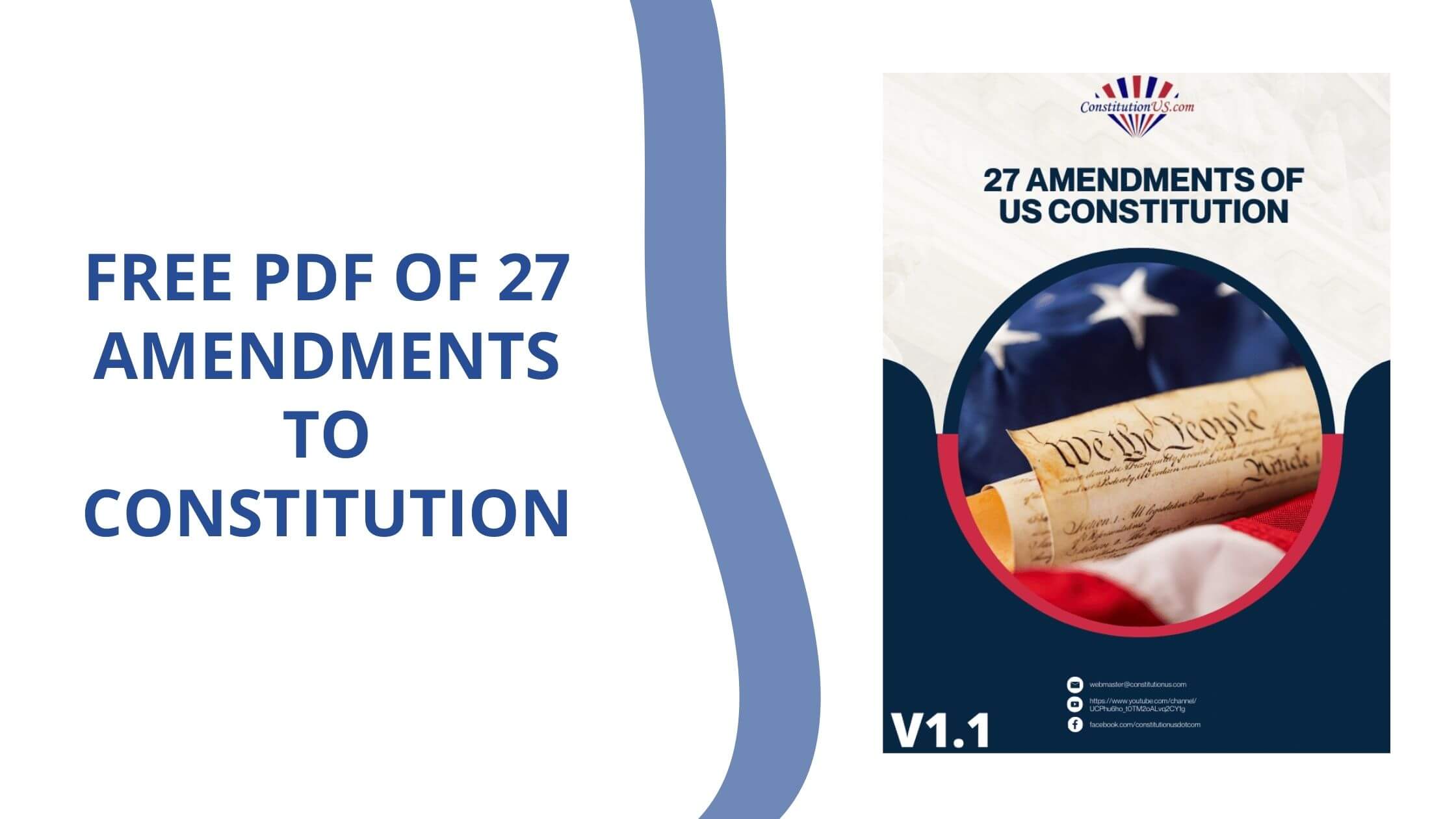
Unfolding the Evolving Chapters: U.S. Constitution Amendments
The U.S. Constitution, a cornerstone of American governance, is not a static document. Its resilience lies in the ability to adapt and evolve through amendments. Each amendment represents a pivotal moment in history, a deliberate decision to refine the constitutional framework that governs the nation.
Founding Principles: The Genesis of the Constitution
The framers of the U.S. Constitution, in their wisdom, crafted a document that would stand the test of time. Rooted in principles of democracy, checks and balances, and individual rights, the Constitution laid the foundation for the American experiment in self-governance. Yet, its framers acknowledged the inevitability of change and provided a mechanism for it—the amendment process.
The Bill of Rights: Safeguarding Individual Liberties
The first ten amendments, collectively known as the Bill of Rights, were added shortly after the Constitution’s ratification. These amendments, including the freedom of speech, religion, and the right to bear arms, were a response to concerns about the potential abuse of federal power. They became a constitutional shield, safeguarding individual liberties against government overreach.
Expansion of Suffrage: Ensuring Inclusive Democracy
The 15th, 19th, 24th, and 26th amendments collectively expanded the right to vote, ensuring a more inclusive democracy. The 15th Amendment prohibited voting discrimination based on race, the 19th granted women the right to vote, the 24th abolished poll taxes, and the 26th extended voting rights to 18-year-olds. These amendments reflect a commitment to the democratic ideal of universal suffrage.
Emancipation and Civil Rights: Toward Equality
The 13th, 14th, and 15th amendments, known as the Reconstruction Amendments, were transformative in addressing issues of slavery, citizenship, and voting rights. The 13th Amendment abolished slavery, the 14th granted equal protection under the law, and the 15th prohibited voting discrimination based on race. These amendments marked a crucial step toward equality and justice.
Prohibition and Repeal: The Ebb and Flow of Policies
The 18th and 21st amendments exemplify the ebb and flow of policy decisions. The 18th Amendment, enacted in 1919, ushered in Prohibition, prohibiting the manufacture, sale, and transportation of alcoholic beverages. However, recognizing its unintended consequences, the 21st Amendment was ratified in 1933, repealing Prohibition. This historical episode showcases the flexibility of the amendment process.
Presidential Term Limits: Balancing Power Dynamics
The 22nd Amendment, ratified in 1951, established term limits for the presidency. This amendment, born out of the tradition set by George Washington of voluntarily stepping down after two terms, formalized the limitation to two terms. It aimed to prevent the concentration of power in the executive branch and foster a rotation of leadership.
Contemporary Issues: Evolving Perspectives
Amendments such as the 25th, addressing presidential succession and disability, and the 27th, regulating congressional pay, reflect the Constitution’s responsiveness to contemporary issues. These amendments showcase the ongoing dialogue between the Constitution and the evolving needs and perspectives of American society.
Challenges and Adaptations: Amendment Dynamics
While the amendment process is deliberate, it is not without challenges. The rarity of amendments and the demanding ratification process illustrate the gravity with which constitutional changes are approached. Yet, this deliberate pace ensures that amendments are reflective of broad consensus and enduring principles.
U.S. Constitution Amendments at josslawlegal.my.id
For those eager to delve deeper into the world of U.S. Constitution Amendments and explore expert insights, a valuable resource awaits at josslawlegal.my.id. Navigate the historical narrative, explore the intricacies of each amendment, and gain a comprehensive understanding of the U.S. Constitution’s evolving chapters. Understanding these amendments is not just a historical exploration; it’s a key to grasping the constitutional fabric that shapes American governance.

